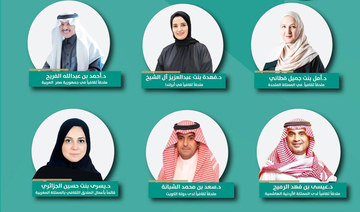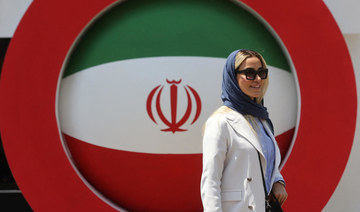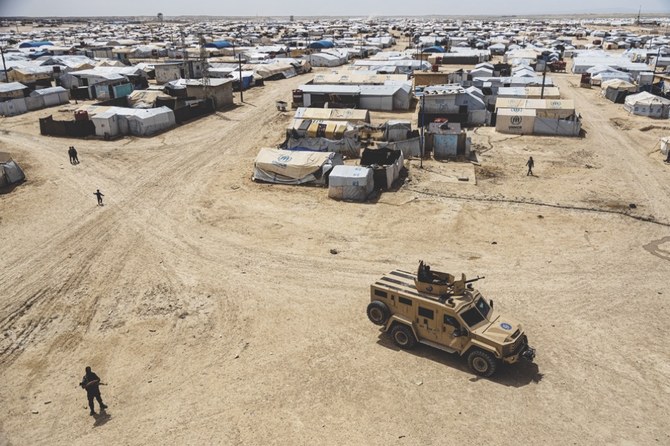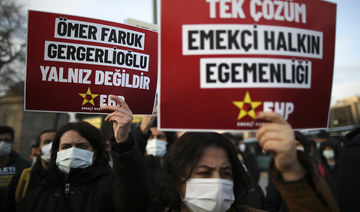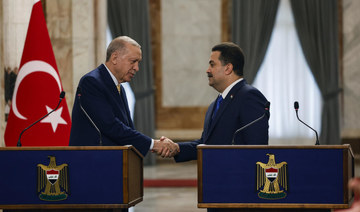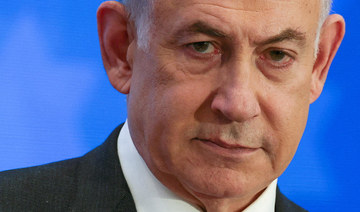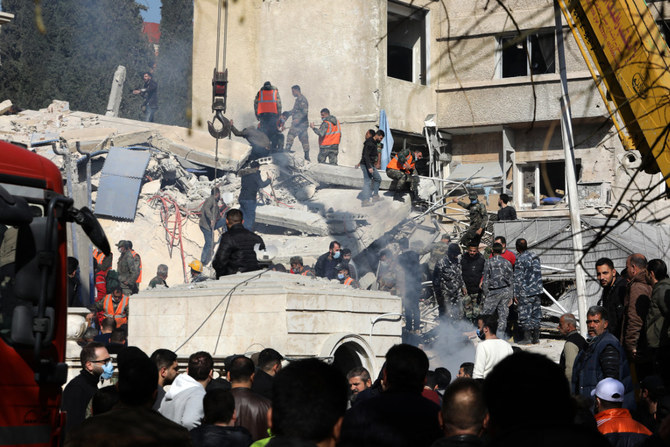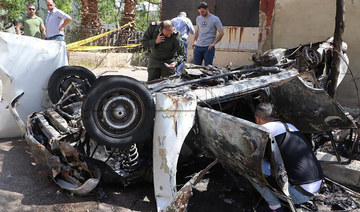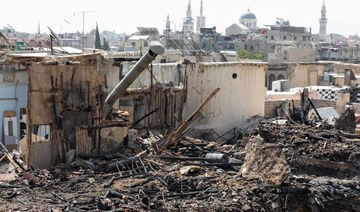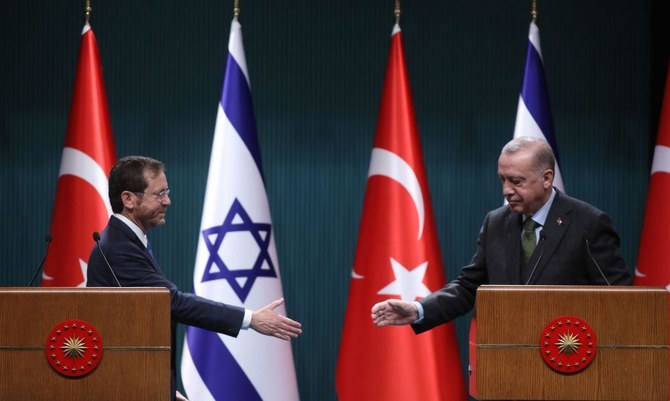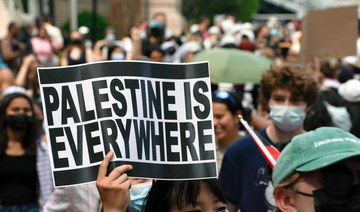DUBAI: For over a billion students around the world, something as mundane as going to school has been abruptly excised from their daily schedule for much of the academic year.
Following the spread of the coronavirus in early 2020, most countries closed their schools and other educational institutions in an effort to protect communities from the pandemic.
In February, Bahrain and Kuwait became the first Gulf Cooperation Council (GCC) countries to announce school closures. By mid-March, Saudi Arabia, Oman and the UAE had suspended all educational institutions until further notice.
According to UN, 1.5 billion children and young people in 165 countries — or 87 percent of the world’s student population — were affected by such closures in March.
The challenge was even greater in the Arab region, where conflicts had already driven 13 million children and young people out of school. Global monitors confirmed that school closures caused by the coronavirus disease (COVID-19) affected more than 100 million learners across the region.
Five months later, with no specific COVID-19 medicine or vaccine around the corner, this grim situation persists. As schools remain closed for the summer holidays, there are clear differences of opinion over whether to reopen them for the new academic year in September.
“All schools exist to serve a community,” said Darren Gale, principal of Horizon International School in Dubai, adding “there is no right or wrong” when it comes to making this decision.
Gale believes that schools are much more than their buildings and divisions. “Whilst aspects of the physicality of school may look slightly different, the culture, ethos and expectations will remain the same,” he said.
Governments in the Middle East continue to work together with educational institutions to determine an optimal strategy on reopening schools and universities. A decision to welcome back students or to continue virtual education will be based mainly on the strict measures and protocols in place by the end of summer.

A picture taken on March 15, 2020 shows school buses parked outside a closed school in Dubai. (AFP/File Photo)
After all, one thing all parties seem to agree on when determining education’s “new normal” is that safety comes first.
“At the forefront of any school’s decision to open fully or as part of a blended model will be community health and safety, the ability to manage and suppress the possibility of transmission, and the ability to give as meaningful learning experience as possible within the context of a school’s campus,” Gale told Arab News.
What children will need in September is “strength in relationships,” he said. “The only new in the ‘new normal’ will be arrivals, movement through the school, drop-off and some groupings for lessons.”
Considering children’s adaptive nature, activities such as repeatedly washing hands, good hygiene and wearing a mask are no longer novel, but part of the daily routine when leaving the house, he said.
“We should be reassuring children what will remain the same rather than solely focusing on what will be different. There needs to be a balance if we are going to be role models to children of how to effectively manage change.”
FASTFACT
GCC Education and COVID-19
- 87% Portion of world’s student population affected by school closures.
- 100m Students in Arab region affected by closures in March 2020.
- 50% Reduction in class size in many GCC schools due to reopen.
Expressing a view common among the region’s educators, Gale pointed out that schools should not be seen “as a standalone solution or the sole risk” to new outbreaks. Instead, schools are part of a community strategy to suppress the transmission of COVID-19, he said.
Bharat Mansukhani, managing director of International Schools Partnership (ISP) Middle East, says schools owned and operated by his group in the region have conducted school-specific risk assessments in preparation for the new year. Those assessments have been cross-checked against their schools in the US, Spain and Malaysia that have already reopened.
“There will be visible changes as the schools adhere to the guidelines provided by the authorities which will include, but not be limited to, temperature checks, masks for teachers and children aged 6 and above, smaller class cohorts, physical distancing, reduced bus capacity and an increased emphasis on washing hands and environment sanitization,” Mansukhani told Arab News.
ISP schools in the UAE and Qatar will focus on maximizing the time children can spend on-site while offering the broadest curriculum possible through a variety of flexible learning models, Mansukhani said.
“While our aim is to have all students on campus every day, our priority remains a healthy and safe environment for our entire community where learning is continuous and uninterrupted.”
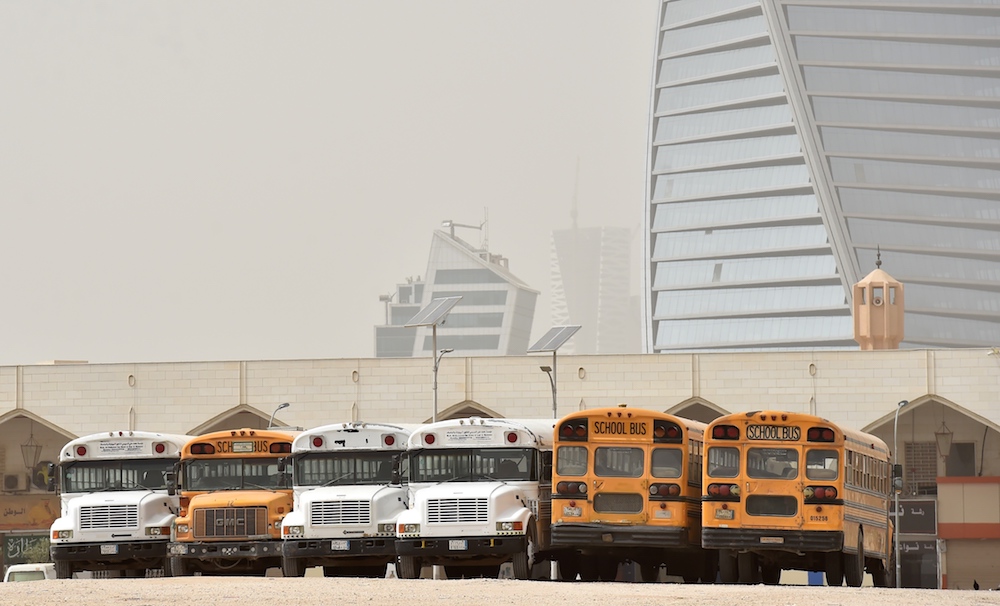
A picture taken March 18, 2020 shows school buses parked in an open area after closure of schools in Riyadh amid measures to combat the novel COVID-19 coronavirus disease. (AFP/File Photo)
A similar mentality pervades nurseries catering to smaller age groups. Shaun Robison, governor of IDEA Nursery in the UAE, said the decision to reopen nurseries should be consistent with all other sectors in the country, noting that childcare centers, camps and hotel playgroups have reopened.
“Nurseries are an important function for a thriving economy that encourages dual-income households, and a female workforce,” he said. “Everyone is ready, and prepared to reopen.”
The same cannot be said of other GCC countries. While Saudi Arabia’s Ministry of Education has announced that schools will reopen on August 30, the decision depends on the health conditions in each of the country’s regions and communities closer to the start of the school year.
Each area will be issued a red, orange or green evaluation to indicate one of three scenarios: Full in-person attendance, a combination of in-person and online learning, and full-time virtual learning.
Class size will be reduced to 50 percent in various parts of the country depending on the number of COVID-19 cases in the community.
Tatweer Educational Transportation services Co., the ministry’s school transport provider, has urged students attending public schools that require their services for the upcoming school year to apply for seats ahead of time due to limited availability

A drone image taken on April 27, 2020, shows school buses parked in a lot in the Emirate of Dubai, during the coronavirus pandemic. (AFP/File Photo)
However, some parents would like distance learning to continue. “I really don’t think it’s a good idea right now when the world hasn’t yet found a cure. I’m not sure if I’ll be sending my son to school,” Amal Turkistani, a Saudi mother, told Arab News. “I would prefer that they continue schooling remotely, or part-time.”
Her view was seconded by another mother, Reham Al-Mistadi, who said: “It is difficult to have children attend school. They’re just kids, unaware of the importance of social distancing and using sanitizers.”
Meanwhile, Oman, which has reported the highest number of COVID-19 cases in the GCC bloc, has not settled on whether to open schools or continue remote learning. A national survey was launched on July 12 to monitor the immunity levels of residents in order to help the government reach an informed decision on reopening schools, colleges and other facilities.
While governments continue to search for an appropriate solution in the next few weeks that ensures a smooth start to the new academic year as well as the safety of young people, many schools are prepared to jump on the virtual train to learning once again, if needed.
“The flexible education models that we have planned for at each of our schools ensures that we can adapt to any change in guidance, as well as any change in the overall situation related to COVID-19, without disrupting the delivery of the high-quality education our schools are known for,” said Mansukhani.
“We believe that if our school communities work together and adhere to the protocols put in place, then we will all be in a good position to minimize the risk of infection.”
As for concerned parents in Dubai, the Knowledge and Human Development Authority released a statement giving private schools and parents the power to determine the best educational model for the new year. The options are physical attendance of all students, scheduling lessons in staggered shifts or to continue part-time or full-time distance learning.
Only time will tell what the outcome will be.
----------------------




